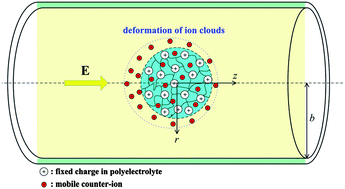Effects of double-layer polarization and counterion condensation on the electrophoresis of polyelectrolytes
Abstract
The electrophoretic behavior of an entirely porous, charged entity such as DNA,

* Corresponding authors
a
Department of Chemical Engineering, National Taiwan University, Taipei, Taiwan
E-mail:
jphsu@ntu.edu.tw
Fax: +886-2-23623040
Tel: +886-2-23637448
The electrophoretic behavior of an entirely porous, charged entity such as DNA,

 Please wait while we load your content...
Something went wrong. Try again?
Please wait while we load your content...
Something went wrong. Try again?
L. Yeh and J. Hsu, Soft Matter, 2011, 7, 396 DOI: 10.1039/C0SM00600A
To request permission to reproduce material from this article, please go to the Copyright Clearance Center request page.
If you are an author contributing to an RSC publication, you do not need to request permission provided correct acknowledgement is given.
If you are the author of this article, you do not need to request permission to reproduce figures and diagrams provided correct acknowledgement is given. If you want to reproduce the whole article in a third-party publication (excluding your thesis/dissertation for which permission is not required) please go to the Copyright Clearance Center request page.
Read more about how to correctly acknowledge RSC content.
 Fetching data from CrossRef.
Fetching data from CrossRef.
This may take some time to load.
Loading related content
